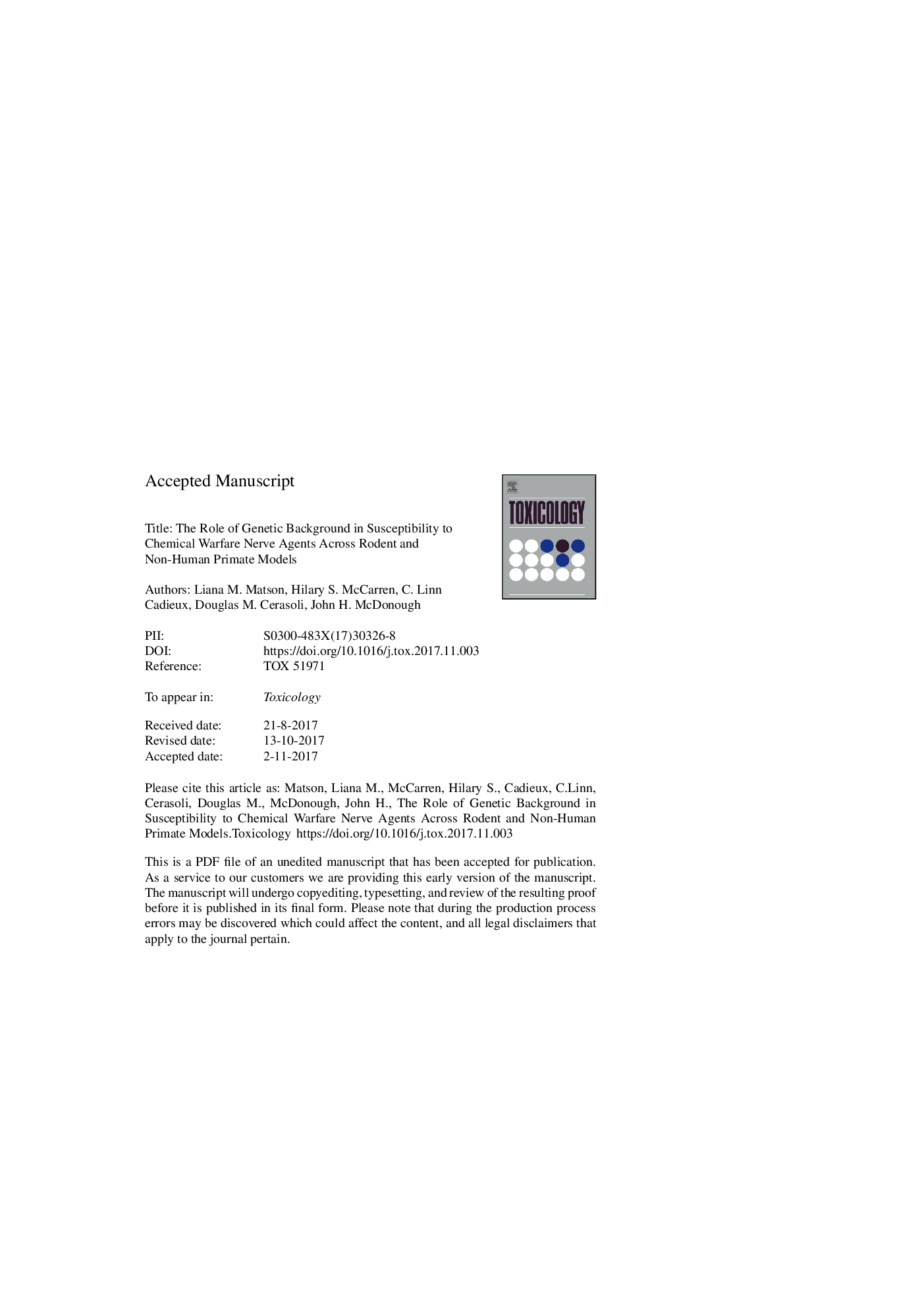| Article ID | Journal | Published Year | Pages | File Type |
|---|---|---|---|---|
| 8552883 | Toxicology | 2018 | 36 Pages |
Abstract
Genetics likely play a role in various responses to nerve agent exposure, as genetic background plays an important role in behavioral, neurological, and physiological responses to environmental stimuli. Mouse strains or selected lines can be used to identify susceptibility based on background genetic features to nerve agent exposure. Additional genetic techniques can then be used to identify mechanisms underlying resistance and sensitivity, with the ultimate goal of developing more effective and targeted therapies. Here, we discuss the available literature on strain and selected line differences in cholinesterase activity levels and response to nerve agent-induced toxicity and seizures. We also discuss the available cholinesterase and toxicity literature across different non-human primate species. The available data suggest that robust genetic differences exist in cholinesterase activity, nerve agent-induced toxicity, and chemical-induced seizures. Available cholinesterase data suggest that acetylcholinesterase activity differs across strains, but are limited by the paucity of carboxylesterase data in strains and selected lines. Toxicity and seizures, two outcomes of nerve agent exposure, have not been fully evaluated for genetic differences, and thus further studies are required to understand baseline strain and selected line differences.
Related Topics
Life Sciences
Environmental Science
Health, Toxicology and Mutagenesis
Authors
Liana M. Matson, Hilary S. McCarren, C. Linn Cadieux, Douglas M. Cerasoli, John H. McDonough,
